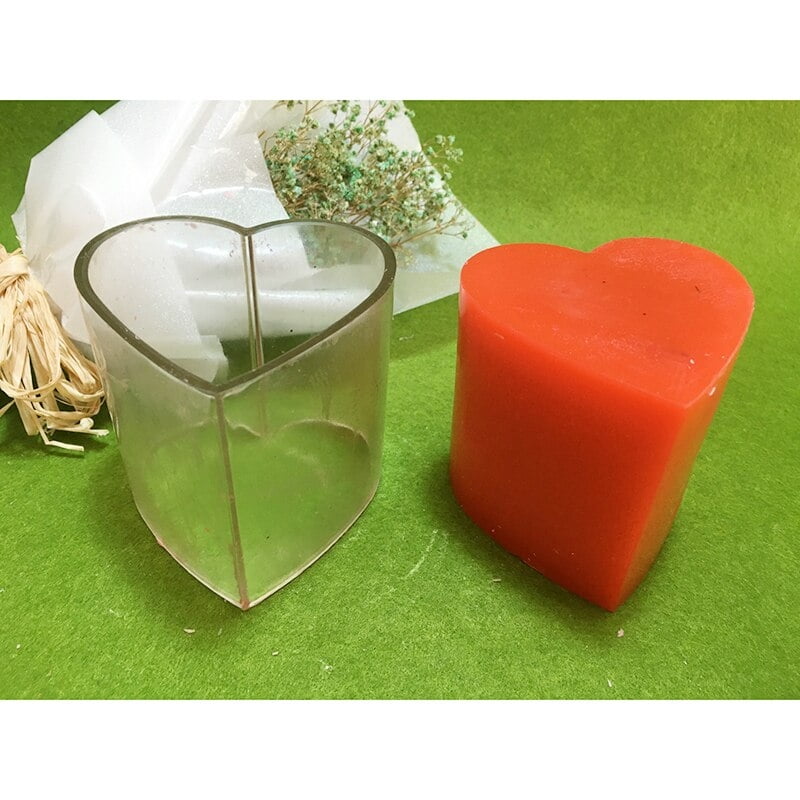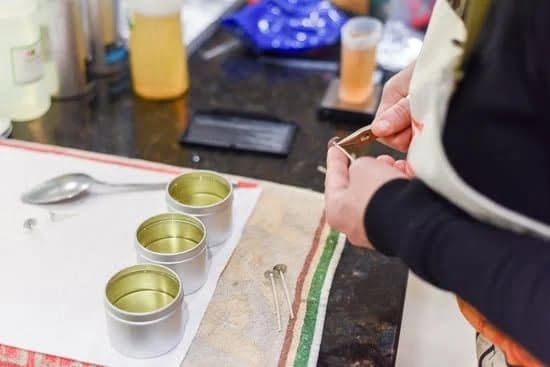Candle making is an art form that has stood the test of time, captivating people with its mesmerizing glow and alluring fragrances. In today’s society, candles have become more than just a source of light; they have become a symbol of relaxation, ambiance, and self-care. The candle making industry has witnessed tremendous growth and evolution over the years, transforming from a humble craft into a thriving global market.
To understand the significance and popularity of candles in modern society, it is essential to delve into their historical background. Candle making dates back thousands of years, tracing its roots to ancient civilizations such as Egypt and China. Back then, candles were primarily made from natural materials like beeswax or tallow. Over time, advancements in technology and access to various materials led to the development of new techniques and designs in candle making.
Today, the candle making industry spans across the globe, driven by increasing demand and evolving consumer preferences. This expansion has paved the way for numerous players and stakeholders within the industry – from small independent candle makers to large-scale manufacturers. The diversity found within this industry extends not only to the range of products available but also to the innovative approaches employed by those who craft them.
As we embark on this exploration of the expanding realm of candle making, we will uncover the growth and transformation that has taken place within the industry. We will delve into topics such as market trends for candles, sustainable manufacturing practices, therapeutic benefits associated with candles, and even venture into predicting future innovations that may shape this timeless tradition. So sit back, relax, and let us illuminate you on what makes the candle making industry truly shine.
The Growth and Evolution of the Candle Making Industry
The Transformation of Candle Making Over the Years
The candle making industry has undergone a significant transformation over the years, evolving from a necessity in households to a thriving business sector. In ancient times, candles were primarily made from animal fats and plant materials to provide light. However, with advancements in technology and changing societal needs, the production and use of candles have evolved.
One major turning point in the evolution of candle making was the discovery and utilization of beeswax as a prime ingredient. Beeswax candles gained popularity due to their clean burning properties and natural fragrance. Additionally, the Industrial Revolution brought about mass production techniques, enabling the availability of affordable and easily accessible candles to people from all walks of life.
The Increasing Demand and Market Trends for Candles
In recent years, there has been a remarkable surge in demand for candles, driven by shifting consumer preferences and lifestyle choices. Candles are no longer limited to being mere sources of illumination; they have become an essential part of home decor and ambiance creation. The growing interest in self-care practices and wellness has contributed significantly to the rise in demand for scented candles with calming fragrances like lavender or soothing essential oils like eucalyptus.
Moreover, candles have found their place as gifts or even statement pieces during special occasions or celebrations. This trend has led to an expansion in product offerings such as themed or personalized candles. For example, custom-made wedding or birthday candles with names or monograms have become increasingly popular.
To cater to this diversified market demand, candle makers have been introducing new designs, fragrances, and materials into their products. Natural soy wax has gained popularity due to its renewable nature and cleaner burn. Additionally, sustainable packaging options such as recyclable glass containers or bamboo lids have started gaining traction among environmentally conscious consumers.
With these trends illustrating the growth potential of the candle making industry, it is crucial for candle makers to stay informed about market preferences and anticipate emerging trends. By doing so, they can continue to meet consumer demands and keep the industry thriving. The next section will explore the diverse range of products offered within the candle making industry and identify key players and stakeholders in the market.
Deconstructing the Candle Making Industry
The candle making industry is a vibrant and diverse sector that offers a wide array of products to meet the demands of today’s consumers. From traditional pillar candles to innovative wax melts and scented jar candles, there is something for everyone in this industry. In this section, we will take a closer look at the different products within the candle making industry and identify the various players and stakeholders involved.
One of the main reasons for the popularity of candles is their versatility. Candles are no longer simply used for providing light during power outages; they have become an essential part of home decor and ambiance.
Pillar candles, taper candles, and votive candles are commonly used for their aesthetics and can be found in various sizes, colors, and designs to suit any style or occasion. Scented jar candles, on the other hand, have gained immense popularity due to their ability to infuse living spaces with pleasant fragrances.
In addition to traditional wax-based candles, there has been a surge in demand for alternative candle products. Wax melts, also known as wax tarts or wax cubes, have become incredibly popular as they offer a flameless option for filling homes with fragrance.
These small wax pieces are melted using heat sources such as tea light burners or electric warmers. Similarly, soy candles have gained traction due to their eco-friendly nature as they are made from natural soybean oil rather than petroleum-based paraffin wax.
Within the candle making industry, there are several key players involved in producing and distributing candles. Candle manufacturers play a significant role in creating high-quality products using different techniques and materials. They often collaborate with designers or employ their own design teams to create unique candle molds and shapes that stand out in the market. Retailers also play a vital role by showcasing and selling these candles through various channels such as physical stores or online platforms.
Overall, the candle making industry is a dynamic sector that continues to evolve with changing consumer preferences and emerging trends. By offering a wide range of products and involving various stakeholders, the industry has managed to cater to the diverse needs and desires of consumers worldwide. Whether it’s through traditional pillar candles or innovative wax melts, the candle making industry continues to shine bright in the market.
The Global Candle Market
The global candle market is a thriving industry that offers numerous opportunities for growth and innovation. In this section, we will delve into the size, scope, and potential of the candle market worldwide, as well as the challenges it faces.
Analyzing the Size and Scope of the Candle Market
The candle market has experienced significant growth in recent years, with a projected value of USD 6.76 billion by 2025 according to a report by Grand View Research. This substantial market size can be attributed to various factors such as the increasing demand for home decor products, the rising popularity of scented candles for aromatherapy and relaxation purposes, and the growing trend of using candles as gifts for special occasions.
The market is not limited to traditional wax candles alone but also includes a variety of products such as decorative candles, jar candles, votive candles, pillar candles, tealights, and more. The versatility and wide range of options available in the candle market cater to different consumer preferences and have contributed to its expansion.
Challenges Faced by the Candle Industry
While there are immense opportunities within the global candle market, there are also several challenges that industry players must navigate. One significant challenge is the availability of raw materials at reasonable prices. The cost and availability of waxes, fragrances, dyes, and other essential ingredients impact manufacturers’ ability to produce competitively priced candles while maintaining quality standards.
Another challenge lies in meeting evolving consumer expectations regarding sustainability and eco-friendliness. In an era where environmental concerns are increasingly prominent, consumers prefer candles that are made from sustainable materials like soy or beeswax and produced using environmentally friendly manufacturing practices.
Moreover, fluctuating economic conditions can influence consumer spending habits and purchasing power. During times of economic downturns or uncertainties, luxury items like candles may experience decreased demand as consumers prioritize essential purchases over non-essential goods.
Candle Making Techniques
Candle making is an art form that has been practiced for centuries, and throughout history, different techniques have been utilized to create these enchanting sources of light. In this section, we will delve into the different candle making techniques that have been used throughout time, from traditional approaches to modern innovations.
Traditional candle making techniques have a long-standing history, and many of these methods are still employed by artisans today. One such technique is the dipping method, where wicks are repeatedly dipped into melted wax until the desired thickness is achieved. This technique allows for the creation of taper candles with a smooth and elegant aesthetic.
Another traditional technique is molding, which involves pouring liquid wax into a mold and allowing it to cool and solidify. This method opens up endless possibilities for creating various shapes and designs of candles. From simple votives to intricate figurines or holiday-themed molds, molding provides candle makers with tremendous creativity.
In contrast to these traditional methods, modern approaches have emerged with advancements in technology and materials. One such approach is container candle making, where candles are created by pouring melted wax into containers such as jars or tins. This technique offers versatility in terms of design and allows for the incorporation of unique elements like botanicals or layered colors.
Moreover, the introduction of fragrance oils and essential oils has greatly enhanced the modern candle making process. By blending scents into the wax during manufacturing or through post-production methods like scent infusion or adding fragrance beads, candle makers can create an immersive sensory experience for consumers.
With ever-evolving technologies and creative minds pushing boundaries in the industry, new techniques continue to emerge in the world of candle making. These advancements allow for personalized candles tailored to individual preferences and unique fragrance combinations that captivate customers seeking one-of-a-kind scents.
Whether utilizing traditional techniques passed down through generations or embracing innovative approaches fueled by modern technology, each candle maker brings their own artistry to their craft. The diversity in techniques ensures that candle lovers have a wide array of choices, each with its own distinct allure.
Candle Making as a Lucrative Business
Candle making has not only become a beloved hobby for many individuals, but it has also proven to be a lucrative business venture for entrepreneurs. Starting a candle making business presents various advantages and disadvantages that potential entrepreneurs should consider.
One of the major advantages of starting a candle making business is the relatively low startup cost. Compared to other businesses, candle making requires minimal investment in equipment and materials. This makes it an accessible option for those who are looking to start their own business without breaking the bank.
Additionally, the candle making industry offers opportunities for creativity and self-expression. Entrepreneurs can experiment with different wax types, scents, and designs to create unique products that cater to specific market niches or customer preferences. This level of customization not only sets their candles apart from mass-produced options but also allows them to establish a loyal customer base.
However, running a candle making business does come with its challenges. One of the main obstacles is sourcing high-quality materials at an affordable price. The availability and cost of wax, fragrance oils, wicks, and other essential supplies can fluctuate depending on market conditions and supplier relationships.
Another challenge that candle makers often face is competition in the saturated market. With so many established brands and homemade candle options available, new businesses need to find ways to differentiate themselves from the competition. This might include developing unique packaging or marketing strategies, offering specialized scents or designs, or focusing on specific target markets such as weddings or events.
Despite these challenges, there have been numerous success stories within the candle-making industry. Many small-scale businesses have grown into profitable ventures thanks to their dedication to quality craftsmanship and innovation. One such example is XYZ Candle Company which started as a home-based business specializing in handmade luxury candles with natural ingredients. Through targeted marketing efforts and collaborations with influencers, XYZ Candle Company quickly gained recognition within the industry, resulting in increased sales and brand loyalty.
Aspiring candle makers should carefully consider both the advantages and disadvantages before venturing into the business. By understanding the potential pitfalls and success stories, entrepreneurs can better navigate this lucrative industry and increase their chances of thriving in the candle making market.
Green and Sustainable Candle Manufacturing
As environmental awareness and sustainability become increasingly important in various industries, the candle making industry has also embraced the green movement. In this section, we will explore the growing commitment to eco-friendliness within the candle manufacturing process.
One of the key aspects of sustainable candle manufacturing is the use of natural and environmentally friendly materials. Instead of traditional paraffin wax, which is derived from petroleum, many candle makers are now opting for alternatives such as soy wax, beeswax, or vegetable-based waxes.
These alternative waxes are renewable resources that produce fewer greenhouse gas emissions when burned compared to paraffin wax. In addition to being more sustainable, these natural waxes also have other benefits such as longer burn times and cleaner burning.
Another area where the industry is focusing on sustainability is in the sourcing of ingredients. Many candle makers are now prioritizing responsibly sourced materials such as organic fragrances and essential oils. By ensuring that these ingredients are obtained through ethical practices and without harming the environment, companies in the candle making industry can further demonstrate their commitment to eco-friendliness.
In terms of packaging and production processes, there is a push towards reducing waste and minimizing carbon footprint. This includes using recycled or biodegradable materials for packaging, implementing energy-efficient manufacturing practices, and utilizing renewable energy sources wherever possible. Some companies even go a step further by offering recycling programs for used candles or encouraging customers to repurpose candle containers.
The commitment to eco-friendliness in the candle making industry is further evidenced by various certifications and labels. For example, some candles may be labeled as “eco-friendly,” “sustainable,” or “natural” to indicate their adherence to specific environmental standards. Additionally, organizations like the Sustainable Green Printing Partnership (SGP) provide certification for environmentally responsible printing practices used in packaging materials.
Overall, the increasing focus on green and sustainable practices in candle manufacturing reflects a larger trend toward conscious consumerism and environmental responsibility. By adopting eco-friendly approaches, the candle making industry aims to minimize its impact on the environment and offer consumers a more sustainable and mindful option for adding ambiance to their homes.
| Key Points | Examples |
|---|---|
| Use of natural and environmentally friendly materials | Soy wax, beeswax, vegetable-based waxes |
| Prioritizing responsibly sourced ingredients | Organic fragrances, essential oils |
| Reducing waste and minimizing carbon footprint in packaging and production processes | Recycled or biodegradable packaging, energy-efficient manufacturing practices, renewable energy sources |
| Certifications and labels indicating adherence to environmental standards | “Eco-friendly,” “sustainable,” “natural” labels; Sustainable Green Printing Partnership (SGP) certification |
The Role of Candle Making in Home Decor and Wellness Industries
Candle making has significantly evolved beyond just being a source of light and has found its place in both the home decor and wellness industries. In recent years, candles have become an essential element in interior design, offering a unique way to enhance the ambiance of any space. The warm glow and flickering flame of candles create a cozy and inviting atmosphere that cannot be replicated by other lighting options.
In the realm of home decor, candles have become more than just functional objects; they are now considered decorative accents that can complement any style or theme. Whether it’s a romantic dinner, a relaxing bath, or simply adding charm to a shelf or tablescape, candles provide versatility in their design, fragrance, and shape.
Candle makers are constantly innovating to create visually appealing products that match the aesthetics of various interiors. From sleek and modern designs to vintage-inspired creations, there is a candle for every home decor enthusiast.
Beyond their visual appeal, candles play a significant role in promoting wellness in our daily lives. Many scented candles are specifically formulated with essential oils known for their therapeutic properties such as lavender for relaxation or eucalyptus for respiratory relief. As we strive to find moments of calm amidst our busy lives, the soothing aroma and gentle flicker of a candle can help create an atmosphere conducive to mindfulness and self-care practices such as meditation and yoga.
As the demand for holistic well-being continues to rise, so does the need for products that support mental and emotional health. Candles are increasingly being used in wellness practices such as aromatherapy where specific fragrances can evoke different moods or enhance concentration. The combination of their calming effects and visually pleasing aesthetic makes candles an integral part of creating personal sanctuaries within our homes.
Future of the Candle Making Industry
The candle making industry has come a long way throughout its history, and as technology and consumer preferences continue to evolve, the future of this industry holds exciting opportunities for innovation and new trends. With emerging technologies and shifting consumer behavior, the candle making industry is poised for significant growth and transformation.
One notable trend in the future of the candle making industry is personalization. Consumers are increasingly seeking products that reflect their individuality, and candles are no exception. As such, personalized candles are expected to gain popularity in the coming years. From custom-made scents to unique designs and packaging, these personalized candles allow customers to create a product that aligns with their specific tastes and preferences.
Another trend that is likely to shape the future of the candle making industry is the rise of unique fragrance combinations. While traditional scents like lavender and vanilla will always have their place in the market, consumers are becoming more adventurous when it comes to fragrances. Candle makers are expected to experiment with new scent combinations, using a variety of essential oils and aromatics to create captivating blends that engage consumers’ senses in innovative ways.
In addition to personalization and unique fragrances, sustainability will continue to be a strong driving force in shaping the future of the candle making industry. With increasing awareness about environmental issues, consumers are demanding eco-friendly products. Candle makers will need to incorporate sustainable practices into their manufacturing processes by using natural waxes such as soy or beeswax while minimizing waste through recycling or compostable packaging options.
Overall, the future of the candle making industry holds tremendous potential for innovation and growth. By embracing emerging technologies, catering to personalized preferences, exploring unique fragrance combinations, and prioritizing sustainability, candle makers can stay at the forefront of this dynamic market. As consumer demands continue to change, it will be crucial for manufacturers in this industry to adapt and evolve accordingly while continuing to deliver high-quality products that enhance ambiance and provide relaxation for discerning customers.
Conclusion
In conclusion, the candle making industry has come a long way from its humble beginnings. From wax and wick to innovative techniques and sustainable practices, this industry has undergone significant transformations over the years. Today, candles have become much more than just a source of light; they have become an integral part of home decor, wellness routines, and even personalized gifts.
The future of the candle making industry looks promising, with emerging technologies and changing consumer preferences opening up exciting possibilities. Personalized candles with unique fragrance combinations are becoming increasingly popular, allowing individuals to create their own signature scents. The focus on sustainability and eco-friendliness is also driving the industry forward, with companies embracing green manufacturing practices and obtaining certifications to ensure they meet environmental standards.
It is important for us to appreciate the artistry and significance of candle making. Candles have been used throughout history for various purposes – from providing illumination during dark times to celebrating special occasions.
Their warm glow creates ambiance in our homes and can even evoke emotions and memories through their fragrances. As we continue to enjoy the beauty and benefits of candles in our daily lives, let us also acknowledge the hard work, creativity, and innovation that go into producing these small but impactful objects.
Frequently Asked Questions
What industry is the candle industry?
The candle industry can be categorized as a part of the home fragrance industry. It revolves around the production, distribution, and sale of various types of candles. This industry encompasses manufacturers, retailers, wholesalers, and even individual artisans who create candles for commercial purposes.
What type of business is candle making?
Candle making is a versatile business that falls under the category of handcrafting or artisanal trade. It involves the creation of candles from wax or other candle-making materials using various techniques such as melting, pouring, molding, and decorating.
Candle making can be pursued both on a small scale as a hobby or as a larger-scale business venture with its own production facility.
What category would candles fall under?
Candles generally fall under the category of home decor and personal care products. They are commonly classified as decorative items that add ambiance to a space or provide light during power outages or special occasions.
Within this broader category, there are further subdivisions based on factors such as scent (aromatic candles), purpose (religious candles), design (decorative candles), or material used (beeswax candles, soy-based candles). Additionally, certain specialty stores may classify candles under categories like wellness products or aromatherapy aids due to their potential soothing effects and ability to create an atmosphere conducive to relaxation.

Welcome to my candle making blog! In this blog, I will be sharing my tips and tricks for making candles. I will also be sharing some of my favorite recipes.





